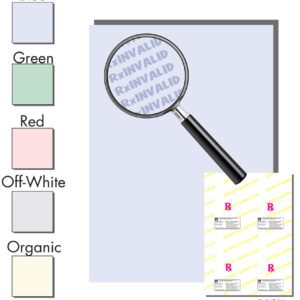

Numerous variations exist, including printing the marks using a raster of lines in one direction on a background of lines in another direction, or using fine line patterns that alias into a visible moire pattern when copied. This makes it possible to see a pattern that had been invisible. This means that if a grey region consists of a grid of very small dark dots the filtering will produce a lighter grey, while a region of larger dots will be affected differently ("big-dot-little-dot"). In addition, human vision is sensitive to luminance contrast ratio. Features smaller than the resolution will also not be reproduced. It will also not be perfectly aligned with the directions of the document, causing aliasing. A scanner or photocopier will act as a low-pass filter on the original image, blurring edges slightly. Void pantographs work by exploiting the limitations and features of copying equipment. Typically they spell out "void", "copy", "invalid" or some other indicator message. Normally these are invisible to the eye, but become obvious when the document is photocopied. Standard features: "VOID" pantograph, erasure-resistant background, watermark, coin reactive ink, microtext print and security features listing.In security printing, void pantograph refers to a method of making copy-evident and tamper-resistant patterns in the background of a document. Special Features: Standard Medical Paper-6 Security Features.


Designed to meet and exceed federal guidelines for tamper-resistant security paper set by the Centers for Medicare and Medicaid Services. Prevent unauthorized copies and safeguard confidential business, legal, healthcare and personal documents.


 0 kommentar(er)
0 kommentar(er)
